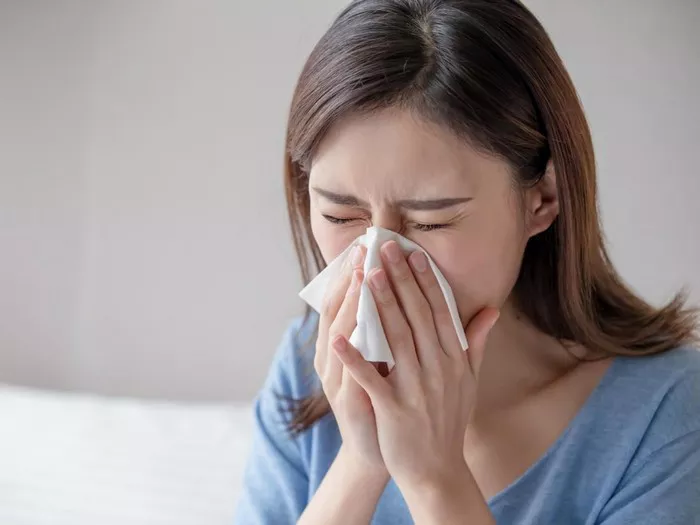Allergies are a common ailment affecting millions of people worldwide, with symptoms ranging from mild discomfort to severe reactions. Many allergy sufferers notice a peculiar pattern: their symptoms often worsen just before it rains. This phenomenon, though well-known among those who experience it, is less understood in the broader context of weather-related health issues. In this article, we delve into the reasons behind the worsening of allergies before rain, exploring the environmental, biological, and meteorological factors that contribute to this condition.
Understanding Allergies
What are Allergies?
Allergies occur when the immune system reacts to substances (allergens) that are generally harmless to most people. Common allergens include pollen, dust mites, pet dander, mold spores, and certain foods. When an allergic person encounters an allergen, their immune system releases histamines and other chemicals, leading to symptoms such as sneezing, itching, runny nose, watery eyes, and in severe cases, asthma attacks or anaphylaxis.
Common Allergy Triggers
Pollen: Pollen from trees, grasses, and weeds is a major trigger for seasonal allergies.
Dust Mites: These microscopic creatures thrive in household dust and are a common cause of indoor allergies.
Pet Dander: Proteins found in the skin flakes, urine, and saliva of pets can trigger allergic reactions.
Mold Spores: Mold grows in damp environments and releases spores into the air, which can cause allergic reactions when inhaled.
Food Allergens: Certain foods, such as nuts, shellfish, and dairy, can cause allergic reactions in sensitive individuals.
Weather and Allergies
How Weather Influences Allergies
Weather conditions play a significant role in the dispersion and concentration of allergens. Temperature, humidity, wind, and precipitation can all affect the levels of allergens in the air and, consequently, the severity of allergy symptoms.
Temperature: Warm temperatures can increase pollen production and prolong the pollen season.
Humidity: High humidity levels can promote the growth of mold and dust mites, while low humidity can dry out nasal passages and make symptoms worse.
Wind: Windy conditions can spread pollen and other airborne allergens over long distances.
Precipitation: Rain can wash away pollen and other allergens from the air, but the effects of rain on allergies can be complex and vary depending on timing and intensity.
The Paradox of Rain
Rain is often seen as a relief for allergy sufferers because it can cleanse the air of pollen and other allergens. However, many people notice their symptoms worsen just before it rains. Understanding this paradox requires a closer look at the interactions between weather patterns, allergens, and the human body.
Mechanisms Behind Worsening Allergies Before Rain
Atmospheric Pressure Changes
One of the primary reasons allergies can worsen before it rains is the change in atmospheric pressure. As a storm approaches, the atmospheric pressure drops. This drop in pressure can cause the nasal passages to expand, leading to increased sensitivity to allergens. Additionally, changes in pressure can affect the sinuses, causing discomfort and making allergy symptoms more pronounced.
Increased Pollen Activity
Just before it rains, the weather conditions can lead to an increase in pollen activity. The air becomes more humid and warmer, creating an environment where pollen grains can burst open, releasing more allergenic particles into the air. This phenomenon, known as “pollen burst,” can significantly increase the concentration of pollen in the atmosphere, exacerbating allergy symptoms.
Thunderstorm Asthma
Thunderstorm asthma is a rare but severe phenomenon that can occur during thunderstorms. Strong winds and downdrafts associated with thunderstorms can break pollen grains into smaller particles, which can be inhaled more deeply into the lungs. This can trigger asthma attacks in susceptible individuals, even those who only experience mild allergies under normal conditions. The combination of wind, rain, and atmospheric pressure changes can create a perfect storm for worsening allergy symptoms.
Mold Spore Release
Mold thrives in damp, humid conditions. Just before it rains, the increase in humidity can stimulate the release of mold spores into the air. These spores can be inhaled and trigger allergic reactions, particularly in individuals who are sensitive to mold. The presence of mold spores in the air can significantly contribute to the worsening of allergy symptoms before a rainstorm.
Biological Responses to Pre-Rain Conditions
Immune System Activation
The body’s immune system can be hypersensitive to the environmental changes that occur before it rains. The increase in humidity and drop in atmospheric pressure can enhance the immune system’s response to allergens, leading to a more intense allergic reaction. This heightened immune response can cause symptoms to flare up, making the period before rain particularly challenging for allergy sufferers.
Sensory Perception and Anticipation
The human body is adept at anticipating environmental changes. Sensory receptors in the skin and respiratory system can detect changes in humidity and pressure, signaling the brain to prepare for potential threats. For individuals with allergies, this anticipation can lead to a heightened state of alertness, making them more aware of and reactive to allergens in their environment.
Environmental Factors
Urban vs. Rural Settings
The impact of pre-rain conditions on allergies can vary depending on whether you are in an urban or rural setting. Urban areas tend to have higher levels of pollutants, which can combine with allergens to create a more severe reaction. Rural areas, on the other hand, might have higher levels of natural allergens like pollen and mold spores. The specific environmental context can influence how pre-rain conditions affect allergy symptoms.
Indoor vs. Outdoor Allergens
Indoor allergens, such as dust mites and pet dander, can also be affected by changes in weather. Increased humidity before rain can promote the growth of dust mites and mold indoors, exacerbating allergy symptoms. Ventilation patterns may also change with impending rain, as people close windows and doors to prepare for the storm, potentially trapping allergens inside.
Managing Allergies Before It Rains
Preventative Measures
Monitor Weather Forecasts: Keeping an eye on the weather can help you anticipate when rain is likely and prepare accordingly.
Stay Indoors: Limit outdoor activities when rain is imminent to reduce exposure to pollen and mold spores.
Use Air Purifiers: Indoor air purifiers with HEPA filters can help remove allergens from the air, providing relief from symptoms.
Keep Windows Closed: Close windows to prevent outdoor allergens from entering your home.
Medications and Treatments
Antihistamines: Over-the-counter antihistamines can help reduce symptoms by blocking the action of histamines released during an allergic reaction.
Nasal Corticosteroids: These prescription medications can reduce inflammation in the nasal passages, providing relief from congestion and other symptoms.
Decongestants: Short-term use of decongestants can help relieve nasal congestion, but they should be used with caution due to potential side effects.
Allergy Shots (Immunotherapy): For long-term relief, allergy shots can help desensitize the immune system to specific allergens, reducing the severity of reactions over time.
Lifestyle Adjustments
Clean Your Living Space: Regularly clean and vacuum your home to reduce the presence of dust mites, pet dander, and mold spores.
Shower After Being Outdoors: Showering and changing clothes after spending time outside can help remove pollen and other allergens from your body.
Use a Dehumidifier: Keeping indoor humidity levels low can help prevent the growth of mold and dust mites.
Wear a Mask: Wearing a mask when outdoor allergen levels are high can help reduce the inhalation of pollen and other particles.
Conclusion
Understanding why allergies worsen before it rains involves a complex interplay of atmospheric, biological, and environmental factors. Changes in atmospheric pressure, increased pollen activity, thunderstorm asthma, and mold spore release all contribute to this phenomenon. By recognizing these factors and taking proactive measures, individuals can better manage their allergy symptoms and improve their quality of life.
As research continues to uncover the intricacies of weather-related allergies, new strategies and treatments will emerge, offering hope for those affected by this common yet often misunderstood condition. Whether through monitoring weather patterns, using appropriate medications, or making lifestyle adjustments, there are numerous ways to mitigate the impact of allergies and enjoy a healthier, more comfortable life.
[inline_related_posts title=”You Might Be Interested In” title_align=”left” style=”list” number=”6″ align=”none” ids=”8983,8976,8973″ by=”categories” orderby=”rand” order=”DESC” hide_thumb=”no” thumb_right=”no” views=”no” date=”yes” grid_columns=”2″ post_type=”” tax=””]
































